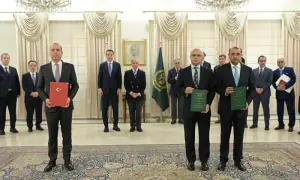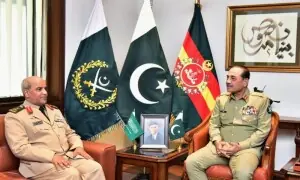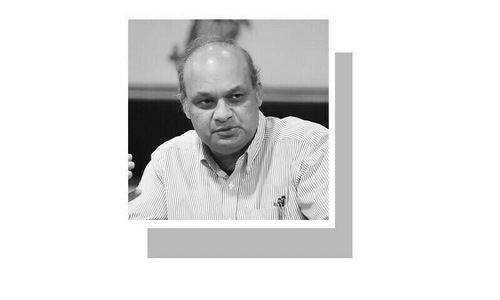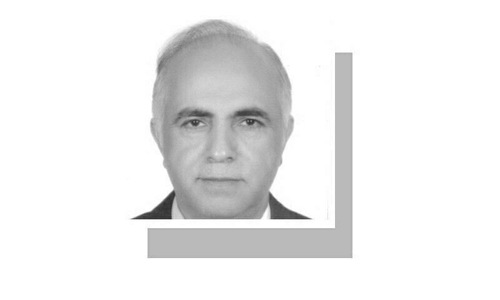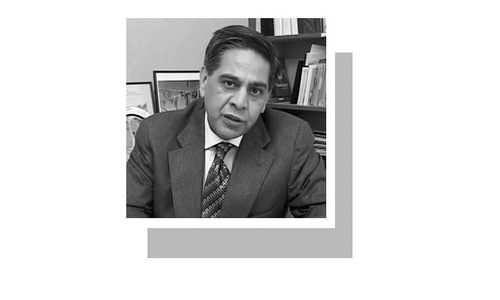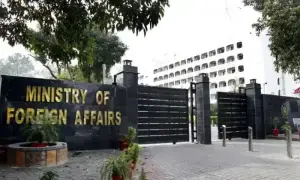CREDIBLE elections are the gateway to democratic governance. Election credibility depends upon the quality of their legal framework, management structures and implementation processes. Given limited space, I will just focus on some critical issues under these three areas for the landmark 2013 elections.
The legal framework includes constitutional provisions and parliamentary acts specifying the elected institutions and offices; voting system; party, candidate and voter qualifications; and election body appointment and powers.
There was no controversy during these elections about the credibility of Pakistan’s federal, bicameral institutional design (except among Baloch insurgents) and little about the parliamentary system.
However, Pakistan’s ‘winner-takes-all’ voting system attracted some criticism. Such systems usually discourage smaller parties. But smaller parties thrive easily in Pakistan and larger parties actually struggle to attain majority. Thus, proportional representation, the main alternative, will further fragment Pakistani polity and increase political paralysis.
A more valid concern is that winner-takes-all systems allow candidates to win without attaining 50pc votes, a possibility enhanced by party proliferation. The Election Commission of Pakistan (ECP) had earlier proposed a ballot blank box option and re-elections in constituencies without outright winners.
Introducing this system without parliamentary approval was odd process-wise. More oddly, the blank box option actually makes outright wins more difficult while the re-election requirement can create an impasse if say 70-80 constituencies fail to elect outright winners and re-elections consume six to eight weeks.
Could parliament meet, meanwhile, with so many seats undecided? Luckily, this plan was abandoned.
Instead of having blank boxes and re-elections to identify people’s second preferences, it is better to require voters to also identify second-preference candidates during initial elections. These second preferences can immediately be counted for the top two vote-getters if no candidate wins outright, thus avoiding costly re-elections and long-drawn uncertainty.
Voter and candidate qualification requirements remain partly problematic. The degree requirement for candidates was fortunately eliminated earlier. The goal of having well-educated representatives can be attained better by offering crash courses to less-educated winners than by making so many Pakistanis ineligible.
However, the multiple, mutually contradictory, constitutional clauses regarding disqualification of wrongdoers created confusion. The most sensible of these clauses is 63(1-h), which mandates three clear disqualification principles: court conviction, serious crime (two years-plus imprisonment) and time-bound disqualification.
Other clauses eg about Pakistani ideology and righteousness, are vague and create unrealistic expectations of disqualifications based on mere accusations.
Furthermore, barring minorities from becoming president and prime minister violates constitutional provisions about equality of all citizens. Finally, barring dual citizens is controversial as there is no evidence that past dual-citizen parliamentarians proved less loyal than other parliamentarians.
Important post-2008 improvements in the legal framework significantly enhanced the independence of the election management structure, ie courts, caretakers and the ECP. This enhanced election credibility encouraged the Pakistan Tehreek-i-Insaf and Baloch nationalists to participate, unlike 2008. However, this independence merely provided these institutions the potential to ensure credible elections. One must also analyse how they used this independence in the implementation processes, including constituency delimitation; voter registration and education; candidate nomination; campaign management; balloting and results tabulation; and post-election dispute management.
Here, the performance is mixed, with some good initiatives mixed with frequent inter-institutional conflicts, weak decision-making and administrative inefficiencies.
The lack of a recent census constrained constituency delimitation. Problems were accentuated by the failure of the Supreme Court and the ECP to develop early consensus on interim measures.
Census data non-availability also hampered voter registration and it’s unclear to what extent the ECP’s recent registration exercise increased registration accuracy.
Endless disagreements on expatriate voting also enhanced registration problems, even though the Supreme Court’s early and reasonable directives were easily implementable before elections.
The ECP issued a laudable directive to encourage female voting but it should have followed-up with voter education in backward areas. Finally, the needless requirement to mention religion in voter registration forms even under joint electorates forced Ahmadis into a boycott.
The candidate disqualification process became controversial due to unclear constitutional provisions. However, recognising these constitutional anomalies, the ECP should have proactively issued clear directives to returning officers to reduce confusion.
The ECP was constrained in barring candidates even with widely alleged wrongdoings by the lack of convictions in complicated corruption cases. But, it could have requested the judiciary, the Federal Board of Revenue and utility companies to establish transparent speedy tribunals to decide simpler default cases. Currently, the rejection process seemed haphazard and inconsistent.
The ECP issued codes of conduct for candidates and journalists for managing the election campaign though their enforcement seems inconsistent. However, the biggest campaign management failure is the inability to provide security to parties, especially those targeted by militants.
It is difficult to assess the degree to which this would have skewed results given that the PPP and the Awami National Party, being unpopular incumbents, were already underdogs and the PPP furthermore faces a leadership vacuum.
Even so, even slight skewing, the large-scale deaths and the ensuing uncertainty are inexcusable given the early warnings issued by militants.
Without going into the results, the main problems in these stages ie vote stuffing, chaotic balloting and counting, and widespread rejection of results, did not appear to be predominate. The biggest fear has been the escalation of violence.
In summary, the conduct of the 2013 elections receives mixed grades. The positive is the increased independence of election bodies.
The weaknesses are their failure to effectively utilise this independence and legal anomalies.
Nevertheless, although repolling has been ordered in some constituencies, these elections may still qualify as among Pakistan’s more credible elections since many earlier ones were blatantly rigged.
Election bodies’ independence, often the most elusive requirement, provides strong potential for resolving the remaining issues for future elections.
The writer is a political economist at the University of California, Berkeley.
murtazaniaz@yahoo.com



